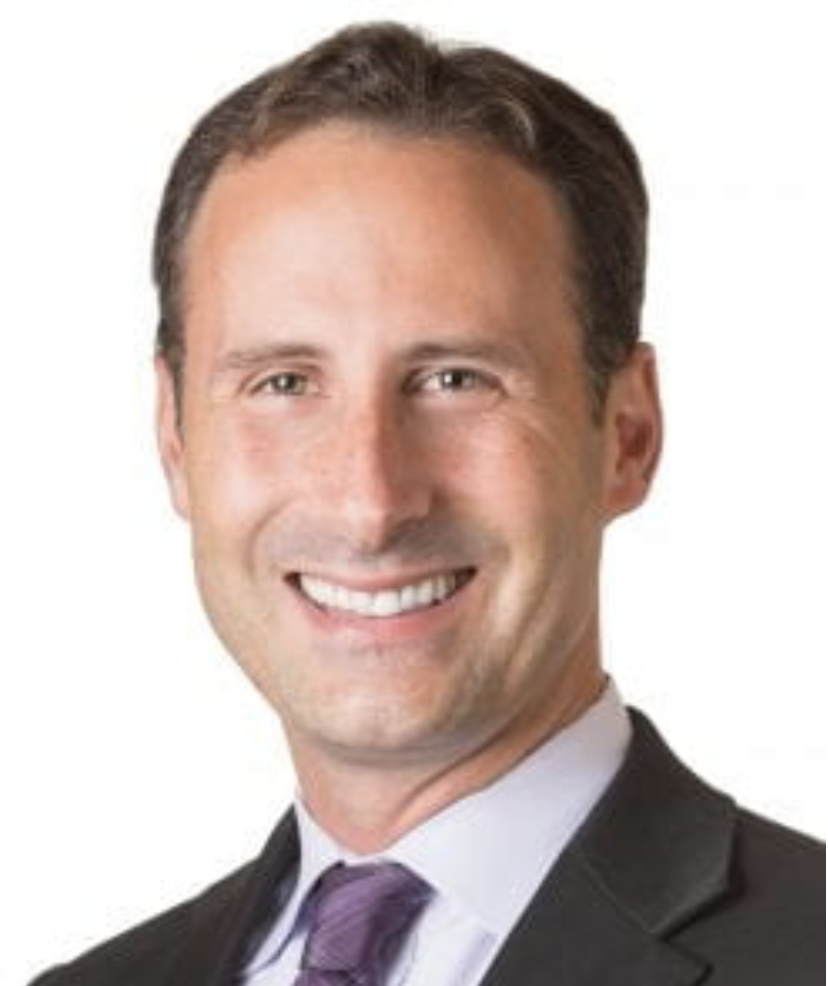Northwestern Researchers Connect Mind-Body for Better Health
By Glenn Jeffers
Jason Ong’s work has long included finding ways to treat sleep disorders without using drugs. So when a colleague brought up mindfulness during his postdoctoral fellowship at Stanford University in the mid-2000s, he thought it was worth exploring.
“‘It would be great if someone actually tested it for insomnia,’” Ong, now an associate professor of neurology and medical social sciences at Northwestern’s Feinberg School of Medicine, recalled his colleague saying. “At that time, no one had done this yet.”
The discussion has led to him committing more than a decade to studying and developing mindfulness-based therapies for insomnia, where patients use meditation not to fall asleep, but to examine and change how they think about their insomnia. “If you're dealing with an active mind, the practice is to watch those thoughts go by rather than engage,” he says. “There's then the chance to lessen the grip these thoughts have, which helps reduce that cognitive arousal. That's why we think mindfulness could help people with insomnia.”
 Dr. Melinda Ring, director of Northwestern's Osher Center for Integrative Medicine
Dr. Melinda Ring, director of Northwestern's Osher Center for Integrative Medicine
Since joining Northwestern in 2016, Ong has been affiliated with the University’s Osher Center for Integrative Medicine. The center, part of the larger, multi-collegiate Osher Collaborative for Integrative Medicine following a 2014 naming gift, has become a nationally recognized source for mindfulness research and a place where academics like Ong can meet like-minded researchers, share ideas, and even partner on projects.
“The opportunity to connect with leaders in the world, being part of that network and having access has been the main benefits of being affiliated with Osher,” Ong says.
Indeed, mindfulness has become a cornerstone of the center’s research, says Osher Director Dr. Melinda Ring, a clinical associate professor of medicine and medical social sciences at Feinberg. The focus of a third of the center’s research involves contemplative medicine, which includes mindfulness — the practice of cultivating greater awareness of thoughts and feelings as they arise. By helping patients (and, in some cases, healthcare professionals) stay more rooted in the present moment, mindfulness can confer benefits in addressing a myriad of conditions, say advocates, including those at Osher.
It makes sense, says Ring. Researching mindfulness aligns with the center’s commitment to integrative medicine, which takes a “patient-centered” approach to care and melds biomedical practices with more holistic and preventive measures.
“It plays a role in day-to-day patient care where we’re sitting with a patient, seeing patients for who they are and focusing on what's most important to them,” Ring says. “Mindfulness and meditation, the recognition of the mind-body connection, is something that many scientists and physicians and patients are getting more comfortable with, so it’s natural for our team to create that evidence base.”

 David Victorson, medical social sciences and Judy Moskowitz, medical social sciences
David Victorson, medical social sciences and Judy Moskowitz, medical social sciences
Leading the center’s charge in mindfulness research is its previous director of research, David Victorson, and its current director, Judy Moskowitz. An associate professor of medical social sciences at Feinberg, Victorson has both practiced and taught mindfulness for nearly two decades and started his research program in this area in 2009. His research has focused on ways to help patients and caregivers affected by cancer learn to regulate difficult emotions such as anxiety, depression, and fear of recurrence, and to cultivate positive cognitive and affective responses that mindfulness training increases, like self-compassion and benefit finding.
While he is careful not to over-embellish the results, Victorson says his and others’ research has uncovered some “pretty interesting associations between indicators of health and wellbeing and mindfulness.” Much like the way a thermostat regulates room temperature, Victorson says, mindfulness can regulate emotion and, in turn, relieve stress.
“We can't say it's a done deal and that mindfulness works in the same way all the time for every population because every group has its own situation, but we can say that there are some modest, universal benefits of this practice for most people's health and wellbeing,” Victorson says.
He notes that while mindfulness practices have existed for more than 2,500 years, researchers have only really been studying mindfulness for about 35 years. “And every year, every day, the research methods get better,” says Victorson, who was Osher’s research director from 2013 to 2015. “We have become more sophisticated and rigorous with our measurement tools and approach.”
Key to supporting this mindfulness research has been the need to secure pilot funding to gain preliminary data, says Victorson. “When you’re first starting out, it’s incredibly difficult to get financial support to establish yourself” he says. The Osher Center has offered pilot research grant support, typically used by junior facility and postdocs to test out ideas build out its mindfulness research to then attract larger grants.
To do that, the center uses funding from philanthropists supportive of Osher’s mission to support these pilot grants. And they’ve been instrumental in substantiating mindfulness as a research field as well as securing larger grants from the National Institutes of Health, Moskowitz says, adding that both she and Victorson have received NIH grants to conduct mindfulness research following pilot programs.
“The research from those pilot grants show usability and acceptability and some promise of affectability efficacy that we can go back to the NIH and say, ‘we’ve got this and it might be a thing,’” Moskowitz says. “That helps convince the NIH that these areas are worth funding for further exploration.”
That process helped Inger Burnett-Zeigler develop her research on a mindfulness-based invention delivered in federally funded health centers based in underserved communities. With Moskowitz as her primary mentor, Burnett-Zeigler used a pilot grant in 2017 to study how mindfulness can help symptoms of stress, depression, and trauma particularly prevalent in racial/ethnic minority communities.
Her research suggested mindfulness helped improved outcomes for those symptoms. Last year, Burnett-Zeigler secured a “R01” NIH grant to expand her work examining the effectiveness of the mindfulness-based intervention in a larger sample — more than 300 adults — across multiple community-based clinics.
But as much as Osher has played a role in supporting her work, Burnett-Zeigler equally appreciates the colleagues she worked with. A yoga practitioner and teacher, Burnett-Zeigler says many of Osher researchers practice what they research.
“Most people at Osher are not just doing work with mind-and-body or integrative medicine approaches to health, but really embody the practices in their personal lives as well,” she says. “Being part of this community is great.”
While Northwestern researchers such as Burnett-Zeigler advance their research projects, Ring and Moskowitz continue to grow that community at Osher, working with postdoctoral students to develop the next generation of holistic researchers. Ring says that development will help Osher continue to expand the knowledge of its practice areas, in particular mindfulness.
“We've seen some of the postdocs that have been in the Osher program stay on board and become strong researchers in mindfulness,” Ring says. “We want to continue that nurturing and training.”
Elaine Cheung, medical social sciences
 One such researcher is Elaine Cheung, who first heard of mindfulness when she came to Northwestern in 2010 to complete her graduate work in social psychology, earning her PhD six years later. Now a research assistant professor of medical social sciences at Feinberg, some of Cheung’s research has focused on using mindfulness to prevent burnout in physicians and medical students.
One such researcher is Elaine Cheung, who first heard of mindfulness when she came to Northwestern in 2010 to complete her graduate work in social psychology, earning her PhD six years later. Now a research assistant professor of medical social sciences at Feinberg, some of Cheung’s research has focused on using mindfulness to prevent burnout in physicians and medical students.
Currently, Cheung is working with Victorson on a pilot study involving first-year internal medicine medical residents at Northwestern Memorial Hospital, teaching them to use mindfulness before learning a stressful procedure: Simulation-based mastery learning for inserting a central venous catheter insertion into a patient’s jugular.
The project was the suggestion of a doctor at the hospital who noticed residents having difficulties with the procedure after learning it and thought they might be grappling with performance anxiety. So Cheung and Victorson used a 10-minute video to teach the residents to stop, take a breath, observe what’s going on around them, and then proceed.
Students who were taught the mindfulness technique made fewer procedural errors relative to control participants during their pretest for intrajugular CVC insertion and had an easier time completing the procedure, Cheung says. They also showed fewer outward signs of stress and had a lower heart rate and less visible trembling, which may suggest lower levels of stress during the test.
“These findings suggested to us that performing a brief mindfulness intervention right before a stressful training might be useful for helping residents manage their stress and learn more effectively,” Cheung says. “That's pretty exciting in the context of medical education and medical training.”